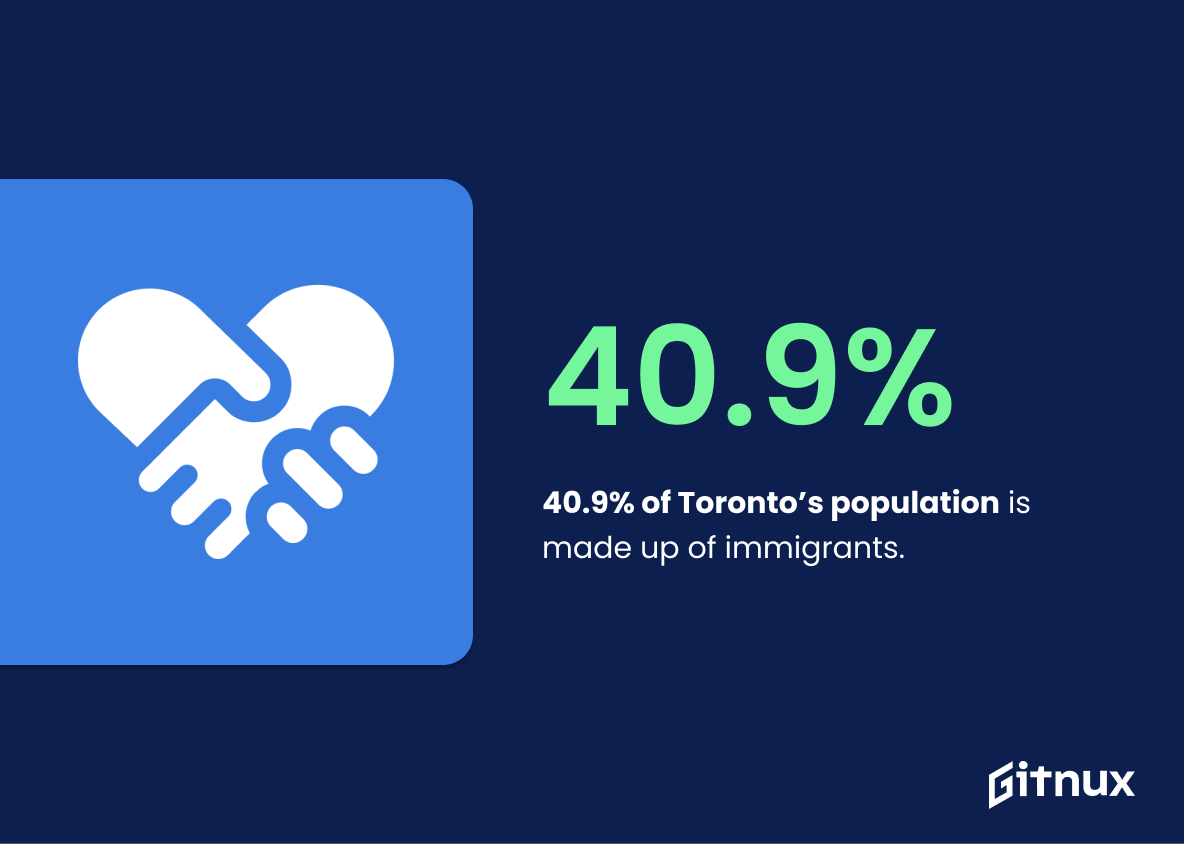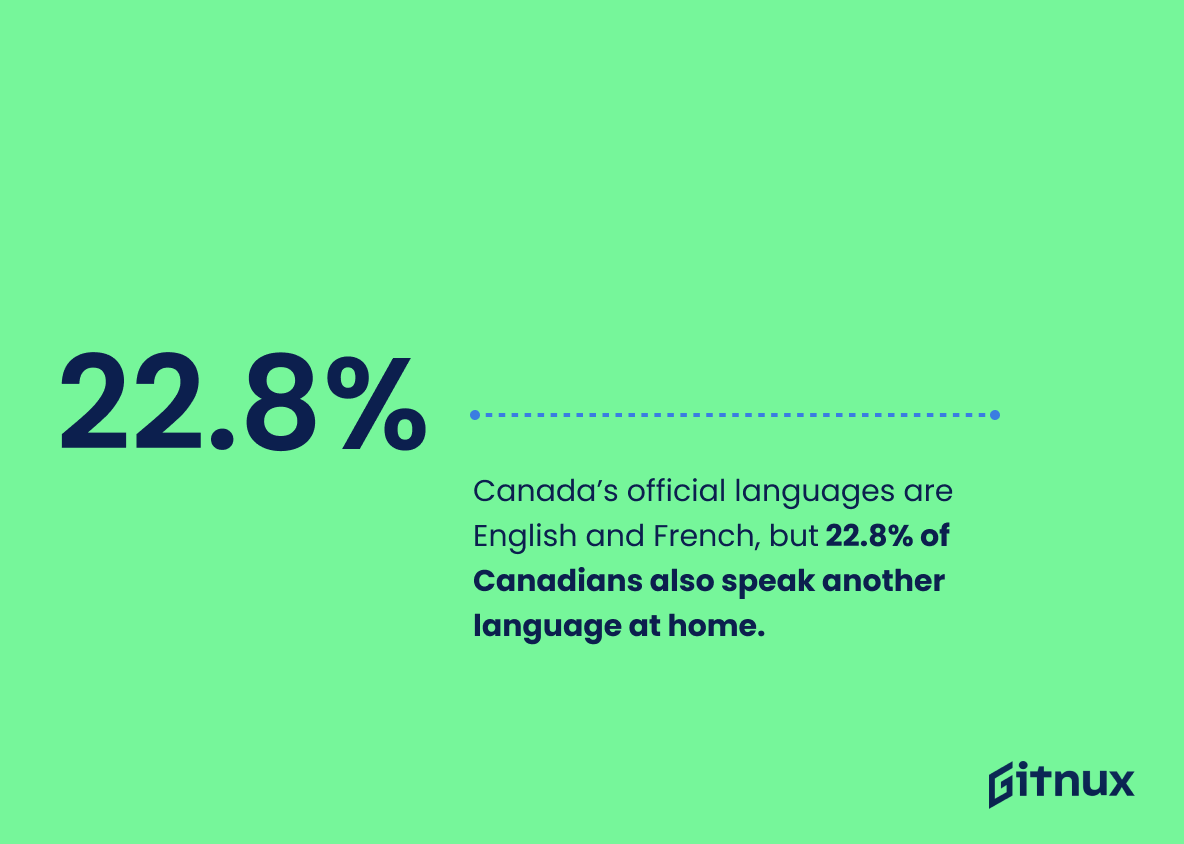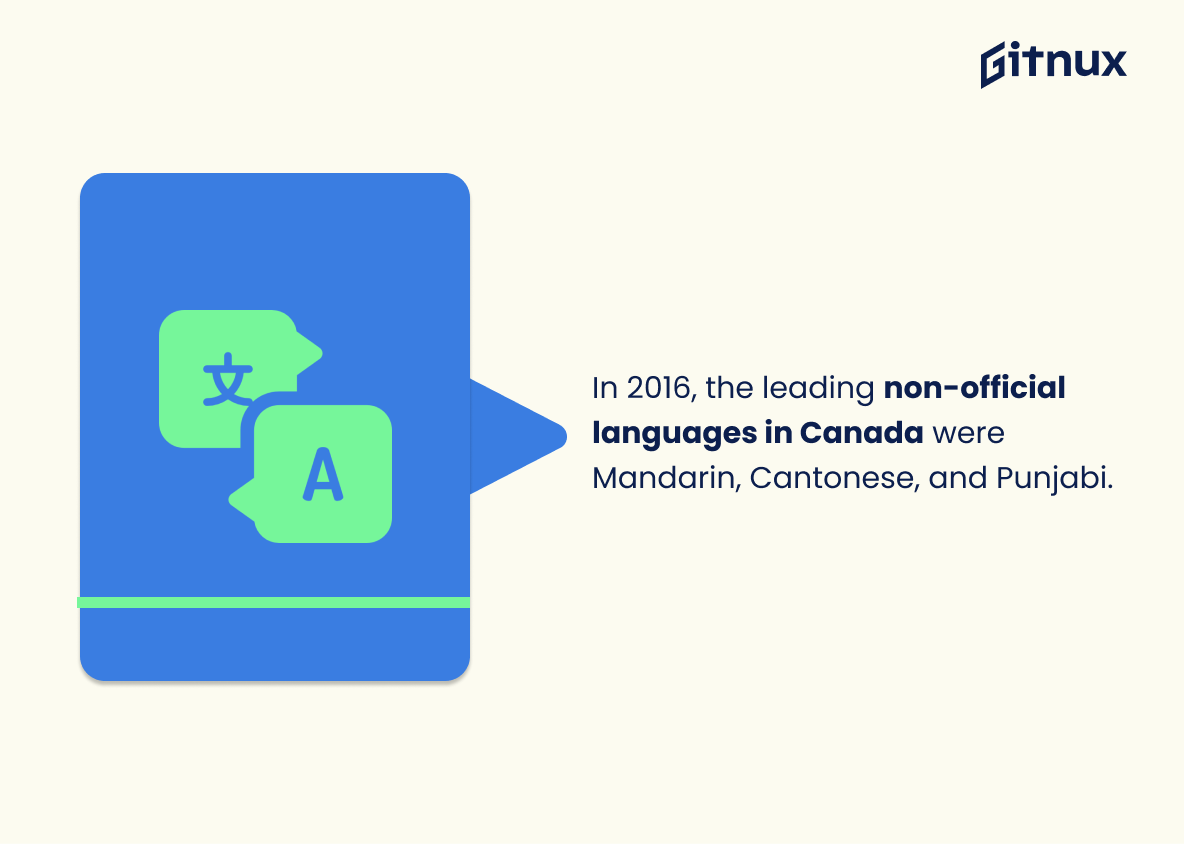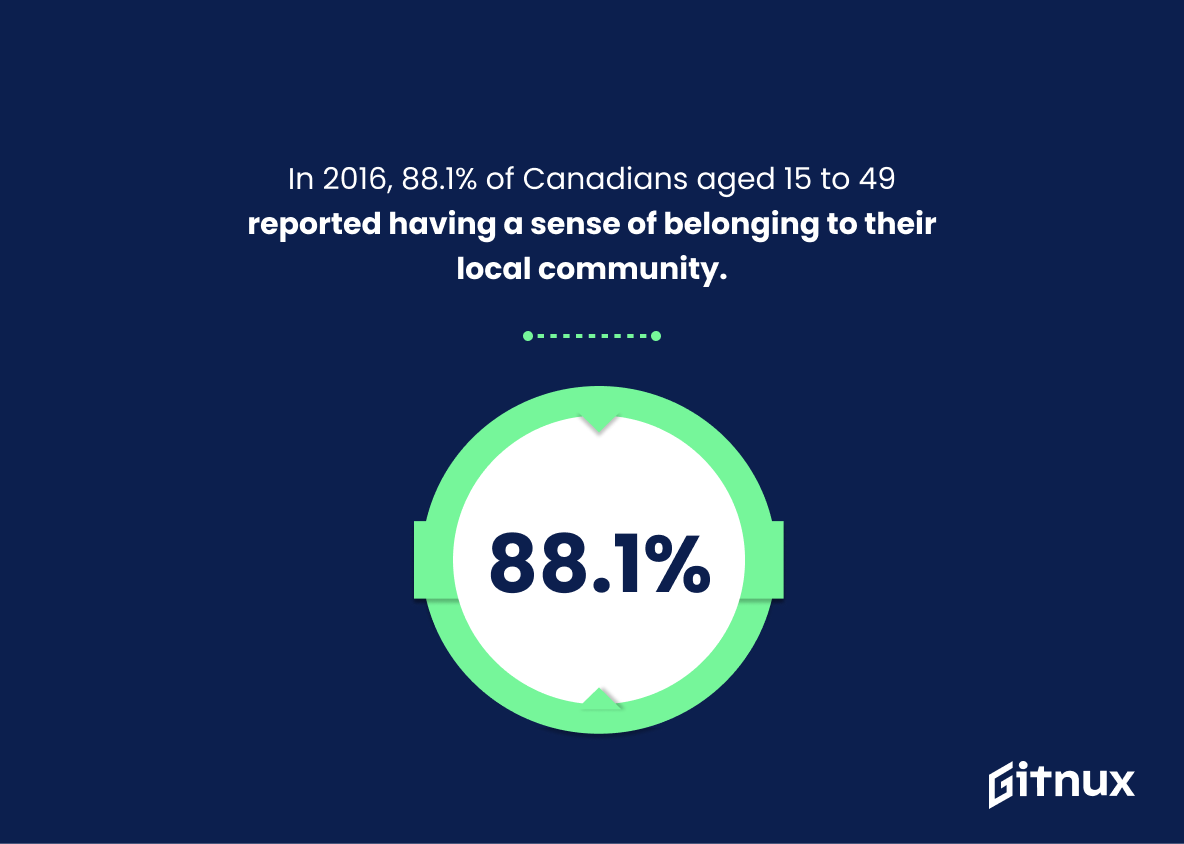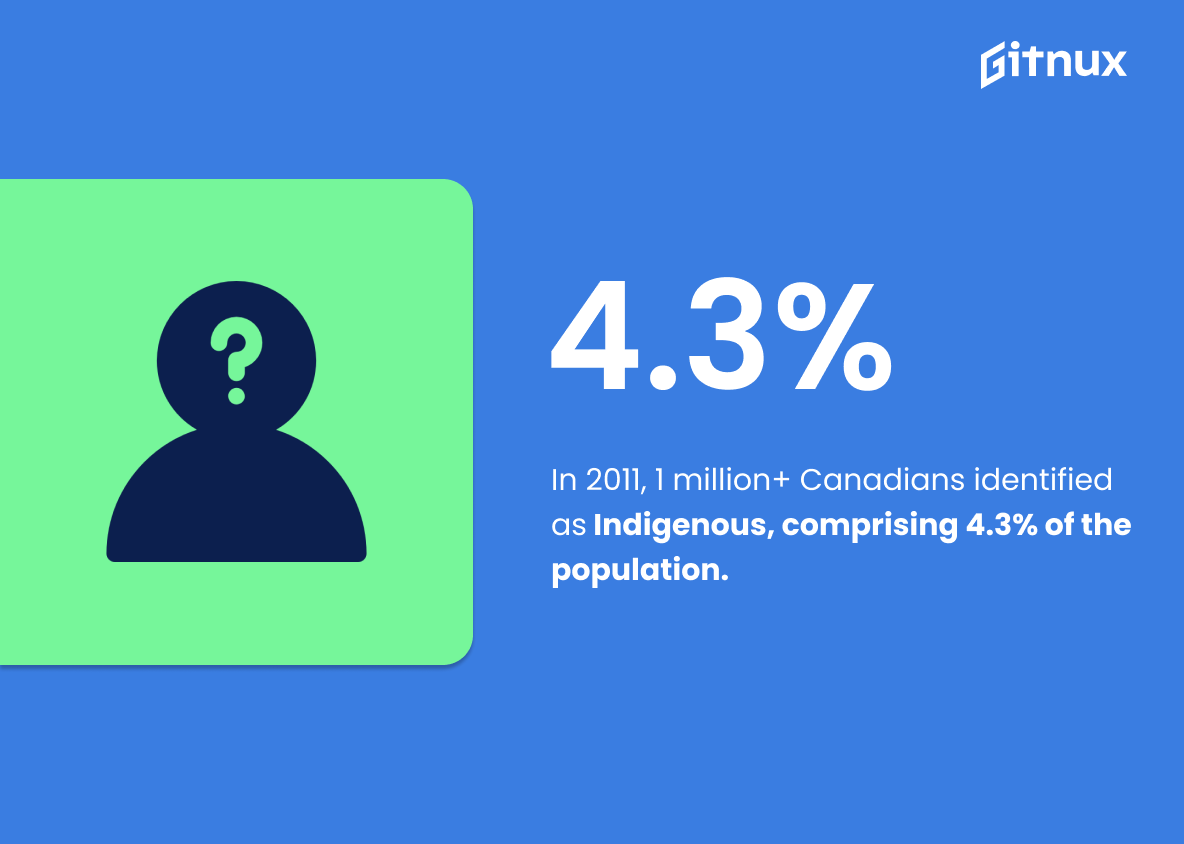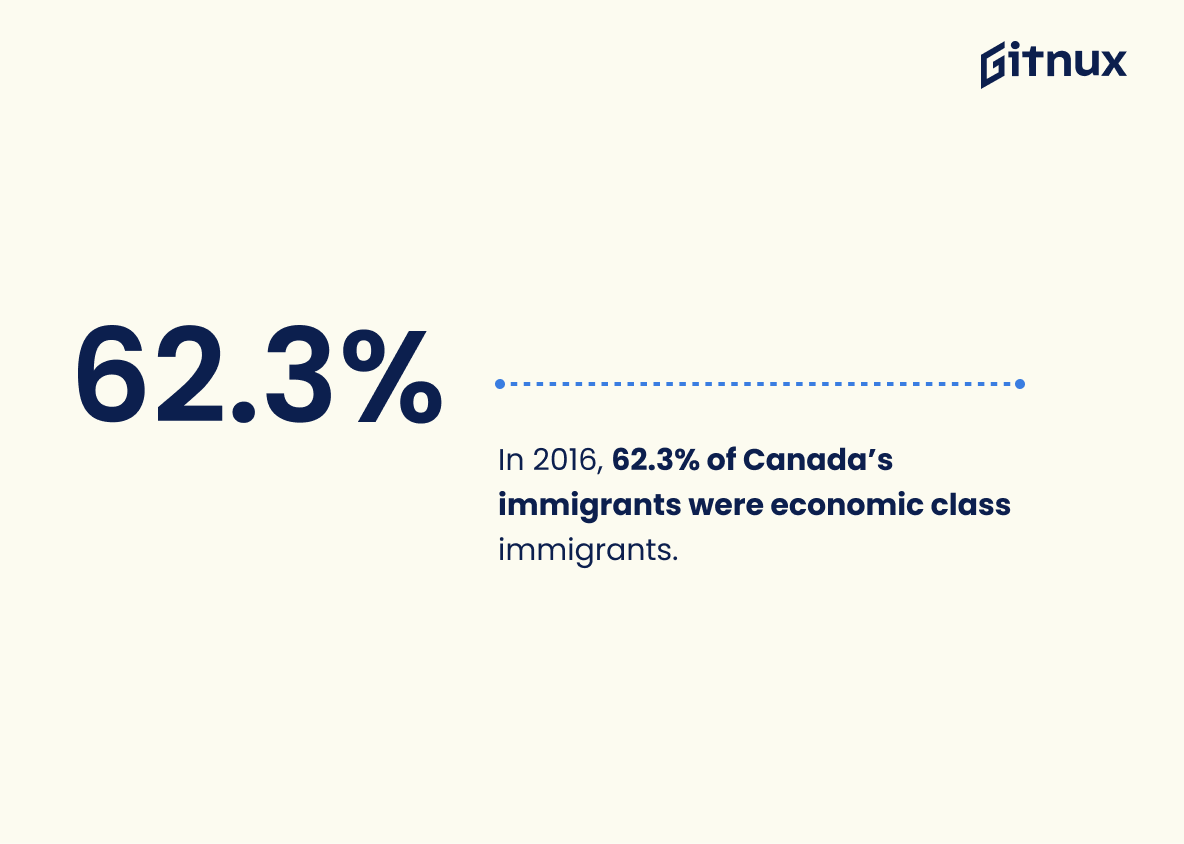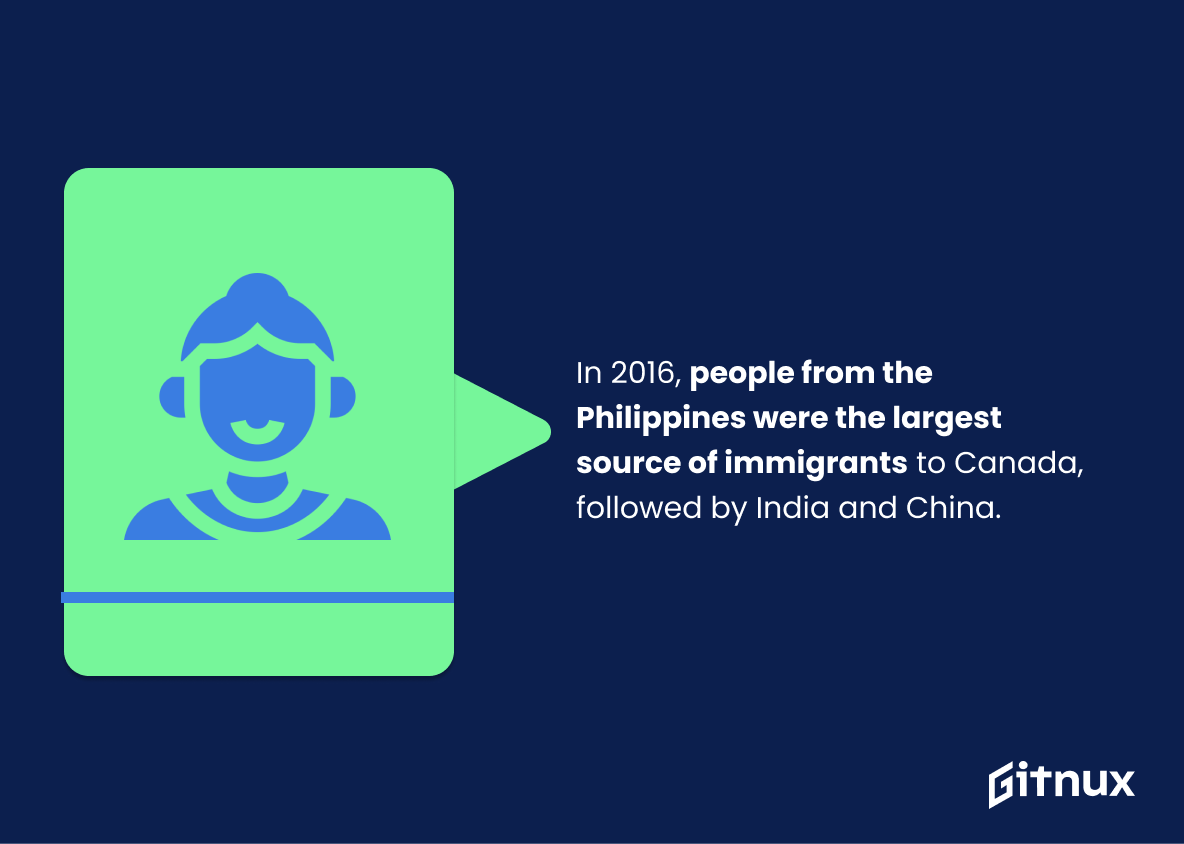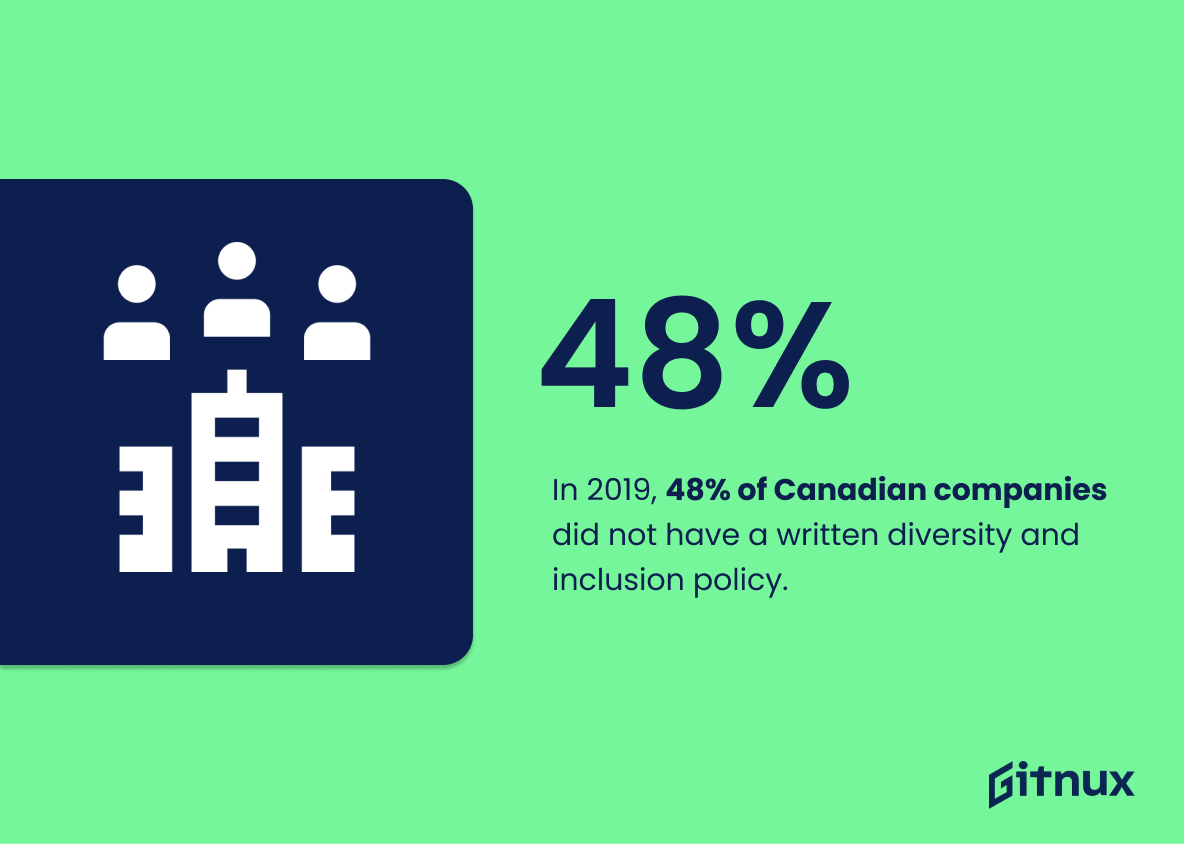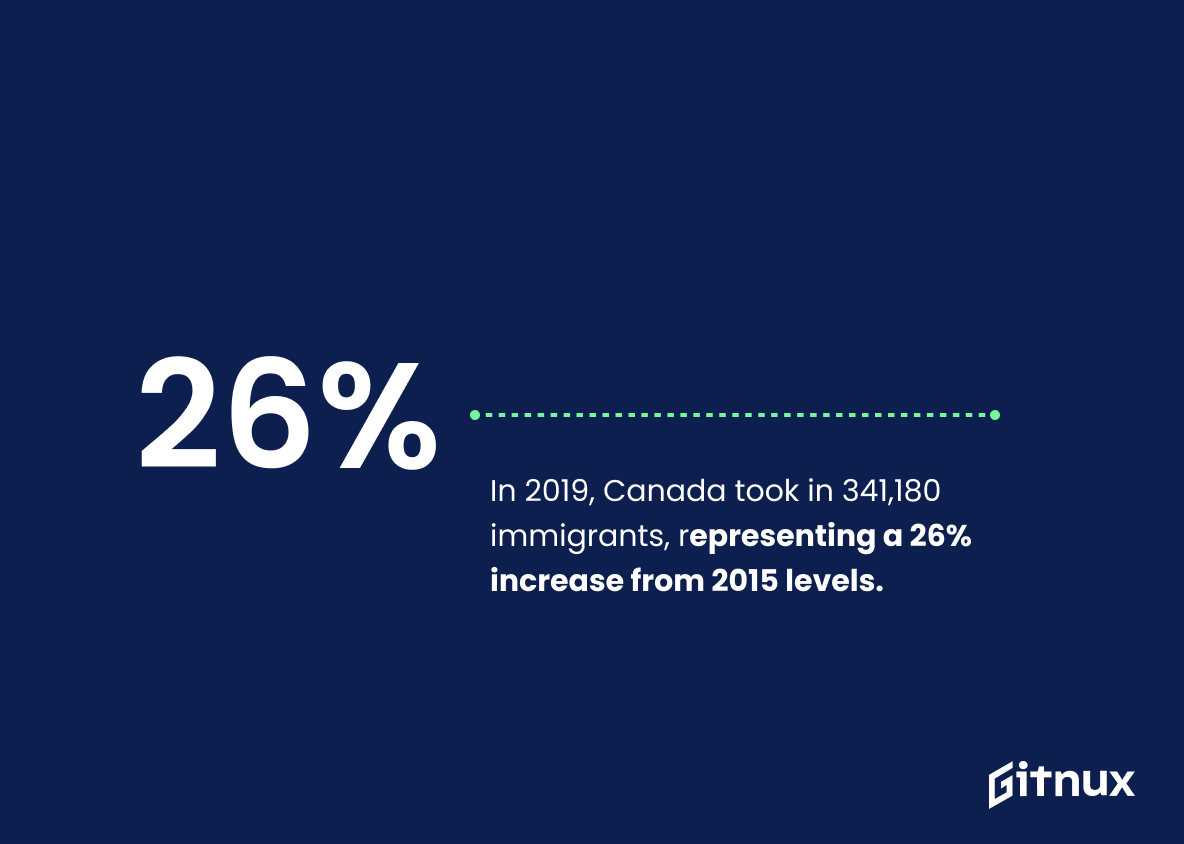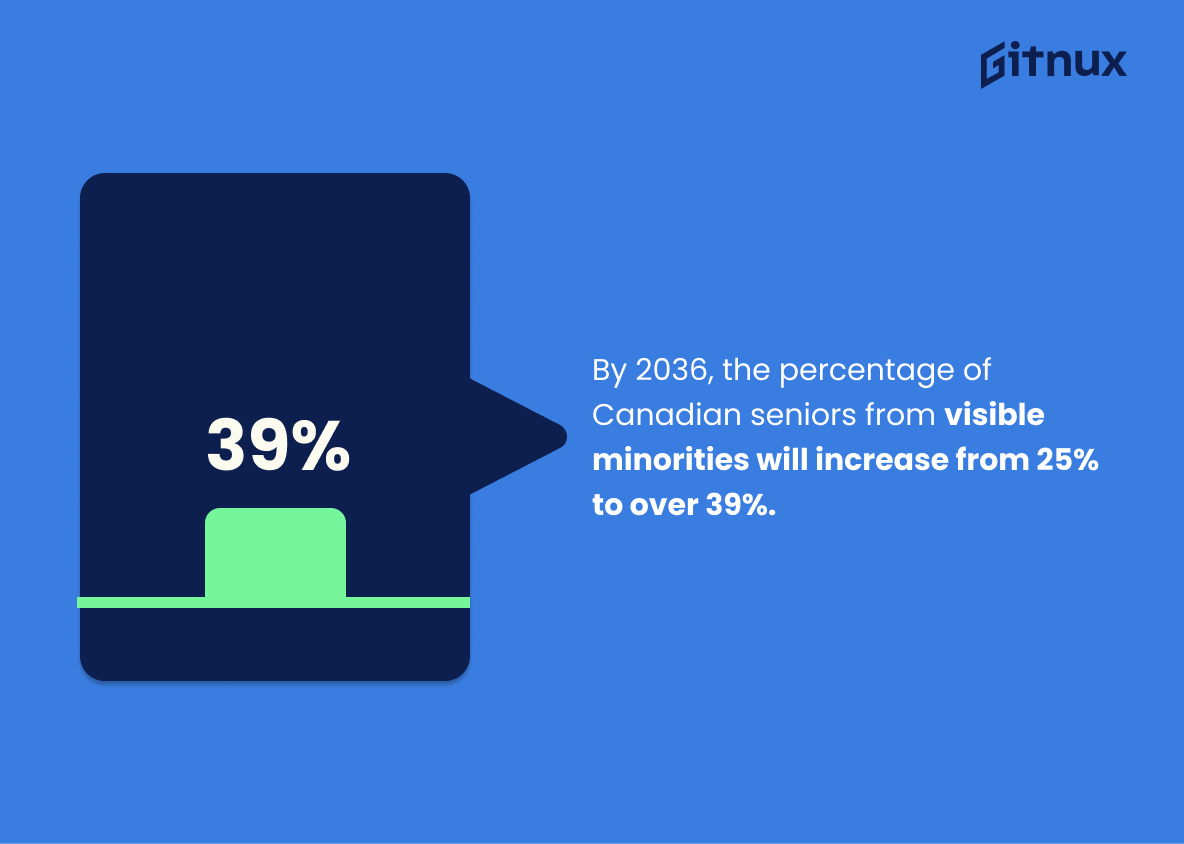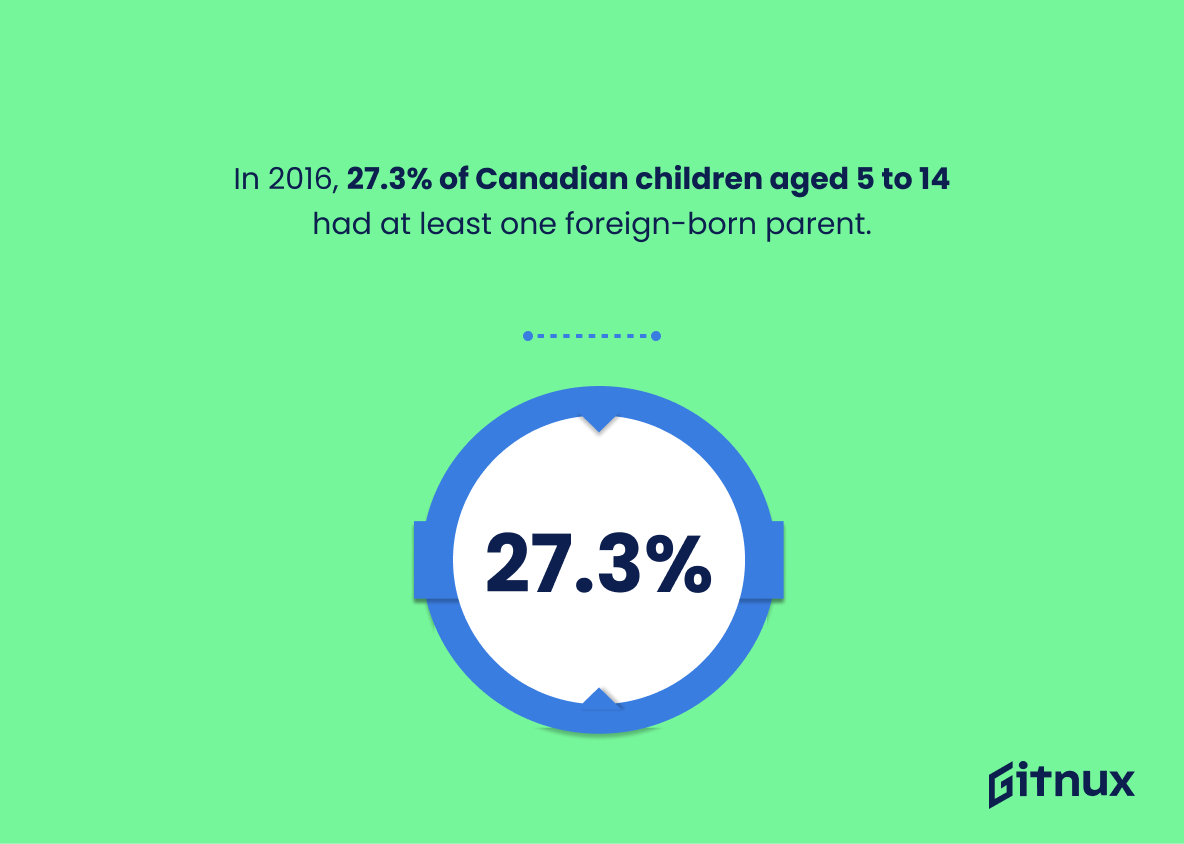Canada is a diverse and multicultural nation, with people from all over the world making up its population. According to Statistics Canada, in 2016 the foreign-born population reached 7.5 million people, accounting for 21.9% of the total population – an increase of 4 percentage points since 2006. That same year there were more than 250 ethnic origins reported by Canadian residents and 40.9% of Toronto’s population was made up of immigrants alone.
By 2036 it is estimated that between 45.2%-49.7% Canadians will have at least one foreign-born parent while English and French remain as official languages but 22.8 % also speak another language at home – Mandarin, Cantonese or Punjabi being some examples among many others spoken across Canada’s provinces and territories today.
In terms of peace index rankings globally; Canada ranks 16 out 88 countries on 2020 Global Peace Index while 88 percent aged 15 to 49 report having a sense belonging to their local community according to StatCan data from 2016 . In 2011 1 million identified themselves as First Nations Métis or Inuit which accounted for 4 percent 3of total populations growth rate has been increasing steadily ever since then too. Visible minorities are expected double working age group 19 point seven per cent 2011 391 per cent 2036 this number even higher when looking seniors 2539 respectively during same time frame . Immigrants 62 three economic class leading source Philippines India China 2019 341 180 representing 26 increase 2015 levels post secondary degree 65 four recent arrivals well 44 visible minority MPs Parliament 13 overall members 2019 48 companies written diversity inclusion policy . Finally 27 visible minorities experienced discrimination unfair treatment past five years survey conducted Environics Institute Race Relations 2020 Human Development Index 9th 167 countries worldwide .
Canada Diversity Statistics Overview
40.9% of Toronto’s population is made up of immigrants.
This statistic is a testament to the diversity of Toronto’s population, highlighting the fact that nearly half of the city’s population is made up of immigrants. It speaks to the inclusivity of Canada as a nation, and the fact that it is a welcoming place for people from all over the world. This statistic is a powerful reminder of the importance of celebrating and embracing diversity in Canada.
By 2036, between 45.2% and 49.7% of Canadians will have at least one foreign-born parent.
This statistic is a powerful indicator of the changing face of Canada. It speaks to the increasing diversity of the nation, with more and more Canadians having at least one foreign-born parent. This speaks to the growing acceptance of immigrants and their contributions to the country, and the importance of celebrating and embracing the diversity of cultures and backgrounds that make up the Canadian population.
Canada’s official languages are English and French, but 22.8% of Canadians also speak another language at home.
This statistic is a testament to the diversity of Canada’s population. It highlights the fact that many Canadians are multilingual, and that Canada is a nation of many languages. This speaks to the cultural richness of the country, and the fact that Canada is a place where people from all backgrounds can feel welcome and accepted.
In 2016, the leading non-official languages in Canada were Mandarin, Cantonese, and Punjabi.
This statistic is a testament to the incredible diversity of Canada. It speaks to the fact that Canada is a nation of many languages, cultures, and backgrounds, and that these languages are embraced and celebrated. It also highlights the importance of language in the Canadian identity, and how it contributes to the country’s unique culture. This statistic is a reminder of the importance of recognizing and respecting the many languages spoken in Canada, and of the need to ensure that all Canadians have access to language services.
In 2016, 88.1% of Canadians aged 15 to 49 reported having a sense of belonging to their local community.
This statistic is a testament to the strong sense of community that exists in Canada. It speaks to the fact that Canadians of all ages and backgrounds feel connected to their local area, which is a testament to the diversity and inclusivity of the country. This statistic is a reminder that Canada is a place where people of all backgrounds can feel accepted and included, and it is an important part of the country’s identity.
In 2011, over 1 million people in Canada identified as First Nations, Métis, or Inuit, making up 4.3% of the population.
This statistic is a powerful reminder of the importance of recognizing the diversity of Canada’s population. It highlights the fact that Indigenous peoples are an integral part of the Canadian population, and that their presence and contributions should be acknowledged and celebrated. It also serves as a reminder that Canada has a responsibility to ensure that Indigenous peoples are provided with the same opportunities and access to resources as other Canadians.
The working-age population of visible minorities in Canada is expected to double from 19.7 % in 2011 to 39.1 % in 2036.
This statistic is a powerful indicator of the changing face of Canada. It speaks to the increasing diversity of the nation, and the growing presence of visible minorities in the working-age population. This shift is a testament to the progress Canada has made in creating an inclusive society, and it is a sign of the country’s commitment to embracing diversity.
In 2016, 62.3% of Canada’s immigrants were economic class immigrants.
This statistic is a testament to the fact that Canada is a nation that values economic growth and development. It shows that the country is open to welcoming immigrants who can contribute to the economy and help build a prosperous future. This statistic is also indicative of the fact that Canada is a nation that is open to diversity and is willing to accept people from all walks of life. This statistic is an important part of understanding the diversity of Canada and how it is embracing immigrants from all over the world.
In 2016, people from the Philippines were the largest source of immigrants to Canada, followed by India and China.
This statistic is a testament to the diversity of Canada’s population, with people from the Philippines, India, and China making up the largest sources of immigrants. It speaks to the country’s commitment to welcoming people from all over the world and creating a vibrant, multicultural society.
As of 2020, there were 44 visible minority MPs in the Canadian Parliament, accounting for 13% of the total number of MPs.
This statistic is a powerful reminder of the progress Canada has made in terms of diversity and inclusion in its Parliament. It shows that the country is taking steps to ensure that all voices are heard and represented in the decision-making process. This is an important step in creating a more equitable society and is a testament to the commitment of the Canadian government to promote diversity and inclusion.
In 2019, 48% of Canadian companies did not have a written diversity and inclusion policy.
This statistic is a stark reminder of how far Canada has to go in terms of promoting diversity and inclusion in the workplace. It highlights the need for companies to take proactive steps to ensure that their workplace is a safe and welcoming environment for all employees, regardless of their background. It also serves as a reminder that diversity and inclusion policies are not just a nice-to-have, but an essential part of creating a successful and equitable workplace.
As of 2016, 65.4% of recent immigrants to Canada had a post-secondary degree.
This statistic is indicative of the fact that Canada is a nation that values education and welcomes immigrants who have achieved a post-secondary degree. It speaks to the country’s commitment to diversity and inclusion, and its willingness to accept and embrace those from different backgrounds and cultures. It also speaks to the potential of immigrants to contribute to the Canadian economy and society, and to the potential for them to become successful and productive members of the Canadian community.
In 2019, Canada took in 341,180 immigrants, representing a 26% increase from 2015 levels.
This statistic is a testament to Canada’s commitment to diversity and inclusion. It shows that Canada is actively working to create a more diverse and welcoming society by increasing the number of immigrants it takes in. This is an important step in creating a more equitable and inclusive society, and it is a positive sign for the future of Canada’s diversity.
By 2036, the percentage of Canadian seniors from visible minorities will increase from 25% to over 39%.
This statistic is a powerful indicator of the progress Canada is making in terms of diversity and inclusion. It shows that the country is becoming increasingly diverse, with more seniors from visible minorities being represented in the population. This is an important step forward in creating a more equitable and inclusive society, and it is a testament to the efforts of Canadians to create a more diverse and welcoming nation.
In 2016, 27.3% of Canadian children aged 5 to 14 had at least one foreign-born parent.
This statistic is a testament to the diversity of Canada’s population, particularly among its younger generations. It highlights the fact that a significant portion of Canadian children are growing up in households with at least one foreign-born parent, which speaks to the country’s commitment to welcoming immigrants and refugees. This statistic is a reminder of the importance of celebrating and embracing the cultural richness that comes with having a diverse population.
27% of visible minorities in Canada reported experiencing discrimination or unfair treatment in the past five years (as of 2020).
This statistic is a stark reminder of the reality that many visible minorities in Canada still face discrimination and unfair treatment. It highlights the need for further action to be taken to ensure that all Canadians are treated with respect and dignity, regardless of their background. This statistic is an important part of understanding the current state of diversity in Canada, and it is essential to recognize the challenges that many visible minorities still face in order to create a more inclusive and equitable society.
Canada ranks 9th out of 167 countries on the 2020 Human Development Index.
The fact that Canada ranks 9th out of 167 countries on the 2020 Human Development Index is a testament to the country’s commitment to promoting diversity and inclusion. This high ranking indicates that Canada is making strides in providing its citizens with access to quality education, healthcare, and other essential services, which are essential for creating an equitable and inclusive society. This statistic is a reminder that Canada is a leader in promoting diversity and inclusion, and that its citizens are reaping the benefits of this commitment.
Conclusion
Canada is a diverse and inclusive nation that has seen tremendous growth in its foreign-born population, ethnic origins, official languages spoken at home, and immigrant populations. With more than 250 ethnic origins reported by residents in 2016, Canada’s multiculturalism is evident across the country. In 2019 alone, 341 180 immigrants were welcomed to Canada – representing a 26% increase from 2015 levels.
The Canadian government also recognizes the importance of diversity within their own ranks; as of 2020 there are 44 visible minority MPs accounting for 13% of all members in Parliament. Additionally, 88.1% of Canadians aged 15 to 49 report having a sense of belonging to their local community while 27 % have experienced discrimination or unfair treatment over the past five years (as per 2020).
These statistics demonstrate how far Canada has come with regards to embracing diversity and inclusion on both an individual level as well as through policy initiatives such as immigration reform and workplace policies promoting equality among employees regardless of race or ethnicity. As we look towards 2036 when between 45-49 percent will have at least one foreign born parent it’s clear that this trend will continue into future generations making Canada even stronger due its commitment to celebrating cultural differences amongst citizens throughout our great nation.
References
0. – https://www.statista.com
1. – https://www.environicsinstitute.org
2. – https://www.2.statcan.gc.ca
3. – https://www.cbc.ca
4. – https://www.50.statcan.gc.ca
5. – https://www.hdr.undp.org
6. – https://www.toronto.ca
7. – https://www.randstad.ca
